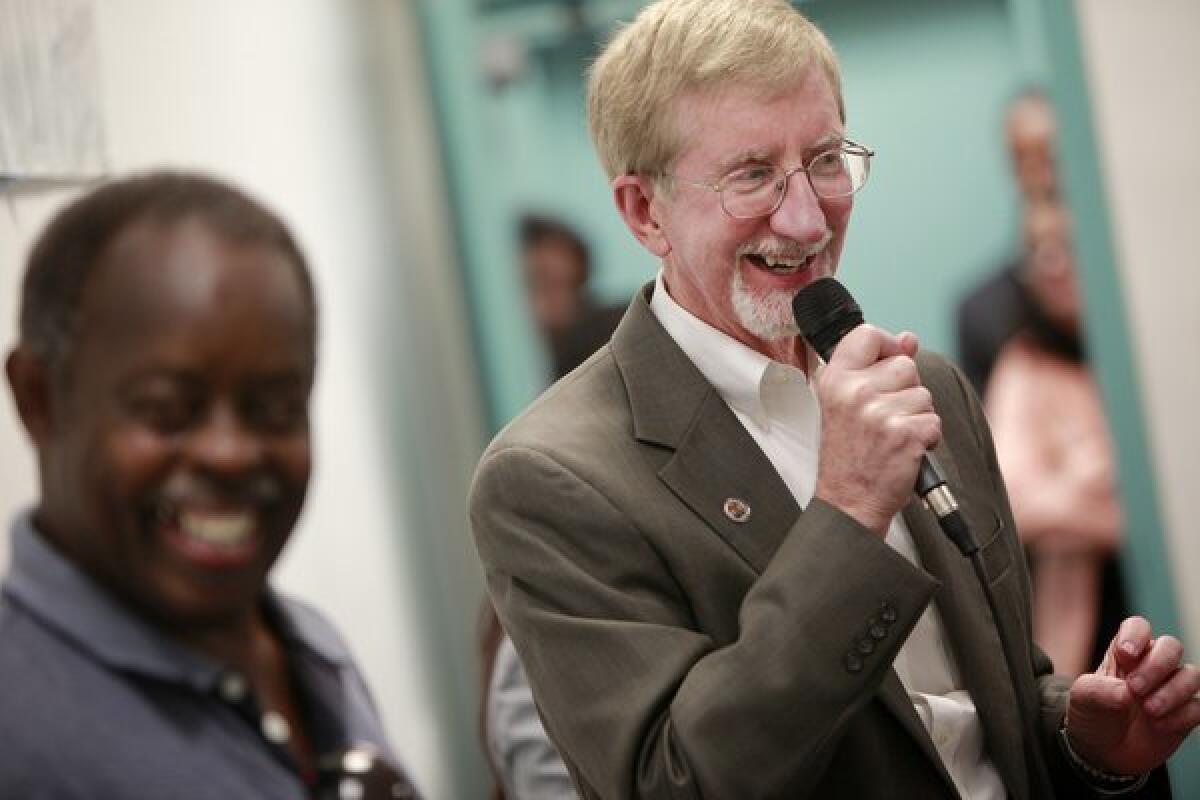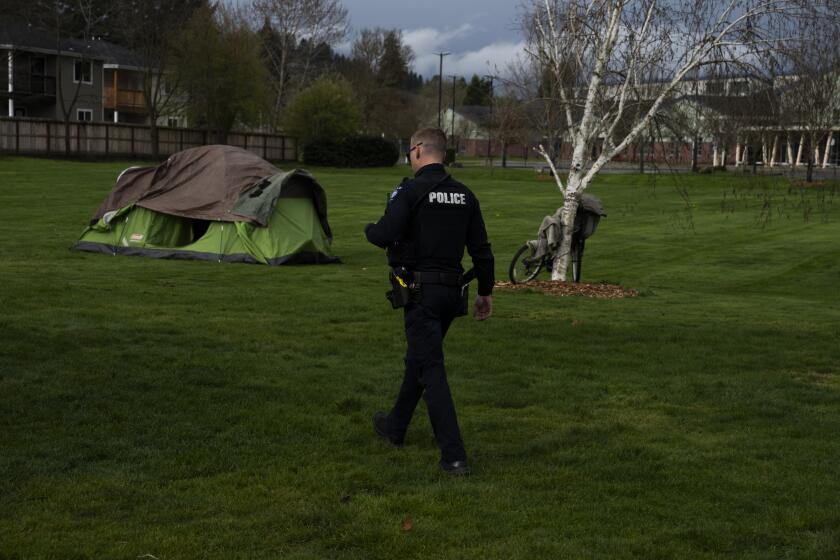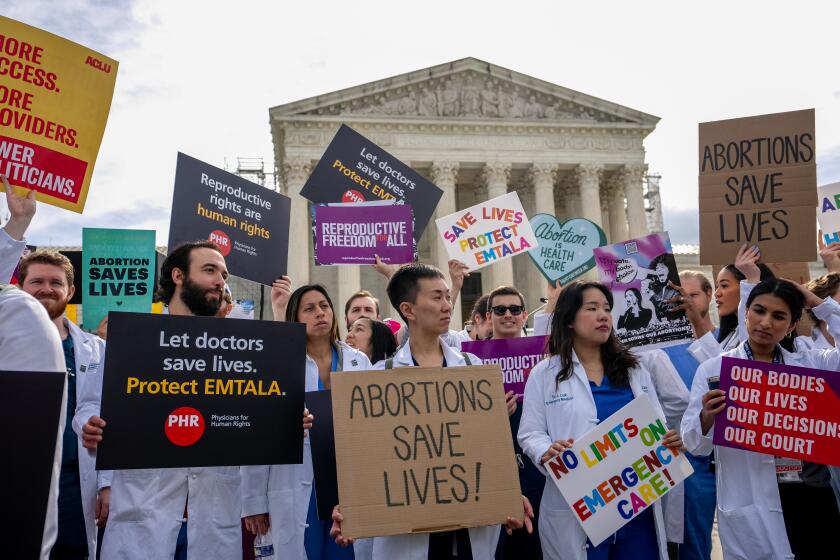Foster care: One small step toward a better system

There are so many high-profile problems in child welfare offices like the Los Angeles County Department of Children and Family Services, it is easy to forget that some of the most exasperating barriers to helping abused and neglected children are laws or rules drafted, adopted and enforced for good reasons by well-meaning people. Take, for example, the so-called Buckley Amendment, a Gerald Ford-era federal statute that quite reasonably prohibits schools from sharing test scores, attendance records or other data about students without their permission.
Most parents, of course, were permitted to get the information for their children under age 18. But the biggest parents of all, and sometimes the most neglectful, were the state of California and county agencies like DCFS. Government agencies, directly responsible for tens of thousands of children in foster care, couldn’t get access to basic educational data kept by other government agencies like school districts. That meant they couldn’t identify when foster children were failing in school, so couldn’t marshal their resources to correct any problems.
The Los Angeles Unified School District, among others, interpreted the law (more properly known as the Family Educational Rights and Privacy Act of 1974, and more commonly called FERPA) as requiring an individual court order for each student before releasing school records to social workers. For tens of thousands of students living in foster care, that was virtually impossible. So no one could track a child’s progress: not the foster parents, not the birth parents, not the child’s social workers.
Nearly 40 years after it passed the Buckley Amendment, Congress amended it to allow schools to share student records with child welfare agencies. California needed to conform its own statutes to give the new federal provision teeth here, and it did. Gov. Jerry Brown signed Assembly Bill 643 into law Monday.
In anticipation of the changes, DCFS and LAUSD already have an electronic data-sharing system. Now they need not limit the information in it to students with individual court orders. Data can move more freely from the school to the social worker.
The importance of the change and of the information-sharing cannot be overstated. Students in foster care have had their lives disrupted at least once, and often many times. Moving from one family to another usually means changing schools, and each move can set a child’s learning back four to six months, according to Jennifer Hottenroth, assistant chief of DCFS’ Education and Clinical Services Division. About half of the county’s foster children have grade point averages below 2.0. That performance in K-12 is, depressingly, a reliable predictor for a child’s involvement with a host of other county agencies and programs: Delinquency Court, probation, mental health, jail, homeless programs, teen pregnancy -- and then, for yet one more generation, the Department of Children and Family Services. To break that cycle, and to safeguard promising futures for foster children, social workers must do their best to find school problems quickly and deal with them effectively.
David Sanders, the former DCFS chief who now chairs Los Angeles County’s Blue Ribbon Commission on Child Protection, noted at the panel’s most recent session that federal law prohibits physicians, who are among the most likely reporters to encounter evidence of abuse, from entering medical information directly into social worker files. It is another example of one of the less headline-grabbing but more important dimensions of the child welfare problem. Legal frameworks, data sharing, assessment, bureaucratic culture -- all have a role in undermining the county’s mission to get the best outcomes for abused or neglected children.
One example of the communication problem was put on display a few days earlier at the Board of Supervisors meeting as supervisors and other county officials wondered aloud whether, with funding set aside long ago, DCFS chief Philip Browning had the actual authority to hire 147 additional social workers. They concluded that he did, but the sometimes contentious 20-minute discussion about cluster meetings, budget supplementals and hiring freezes left little clarity or consensus about when he actually got that authority and how it was delivered to him.
At the commission meeting, member Andrea Rich -- who as president and CEO of the Los Angeles County Museum of Art was, like Sanders, a county department head -- noted that there were problems endemic to “running big, awful bureaucracies.” But as she pointed out, most don’t end up with dead children.
Again, though, child deaths are only the most agonizing and urgent problem. The Blue Ribbon Commission must also focus on the silos, systems, communications gaps, data failures, factions and other problems that lock thousands of children on a less spectacular but still tragic and perhaps more insidious course toward bad outcomes, much like those whose education records could not, until now, be even seen by the people with legal responsibility for their well-being.
The commission next meets Sept. 12.
ALSO:
Jesse Lee Peterson, tea’d off in South L.A.
Wishing for Hyperloop, betting on high-speed rail
Photo essay: 10 reasons to salute L.A.’s transportation future
More to Read
A cure for the common opinion
Get thought-provoking perspectives with our weekly newsletter.
You may occasionally receive promotional content from the Los Angeles Times.







